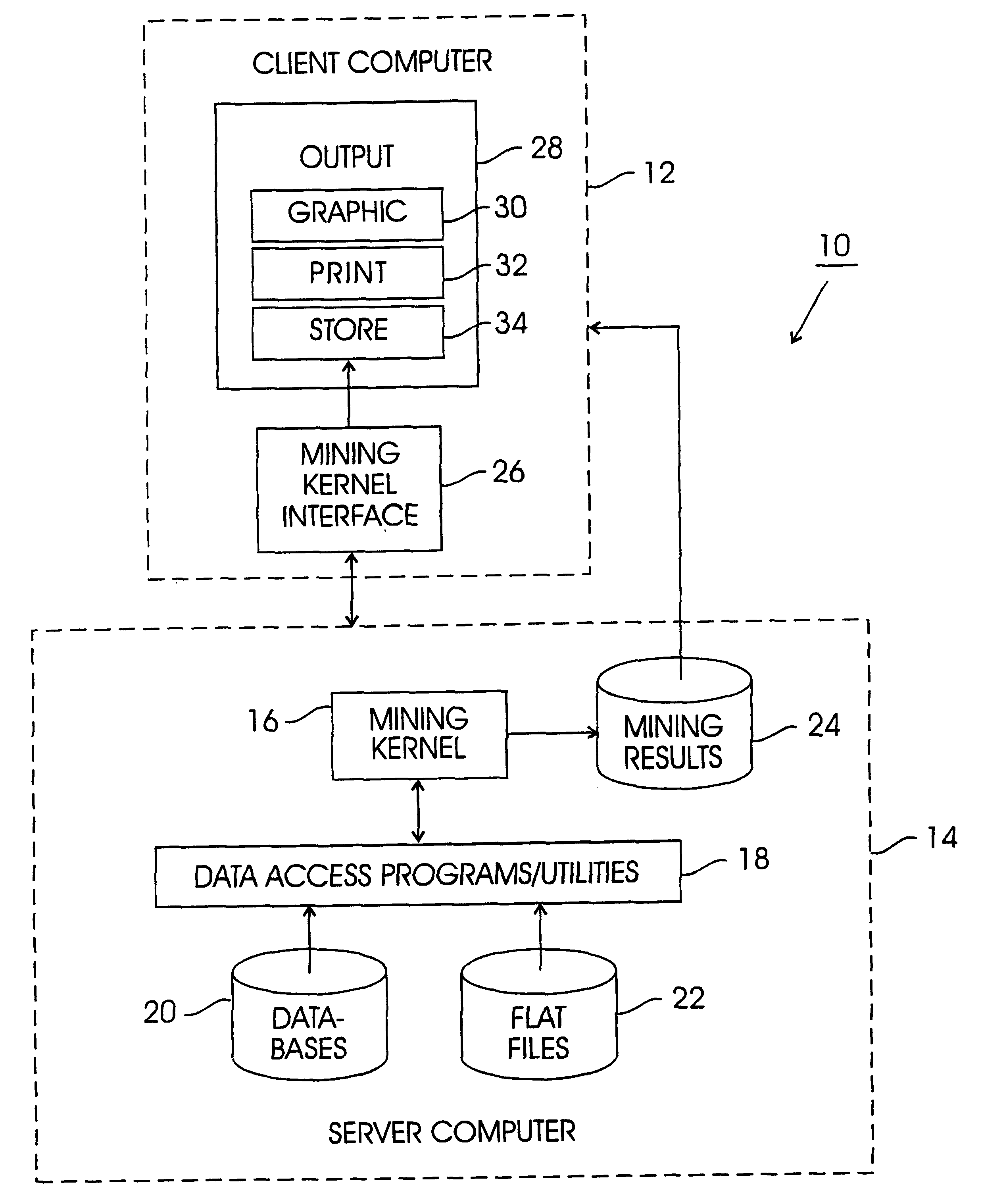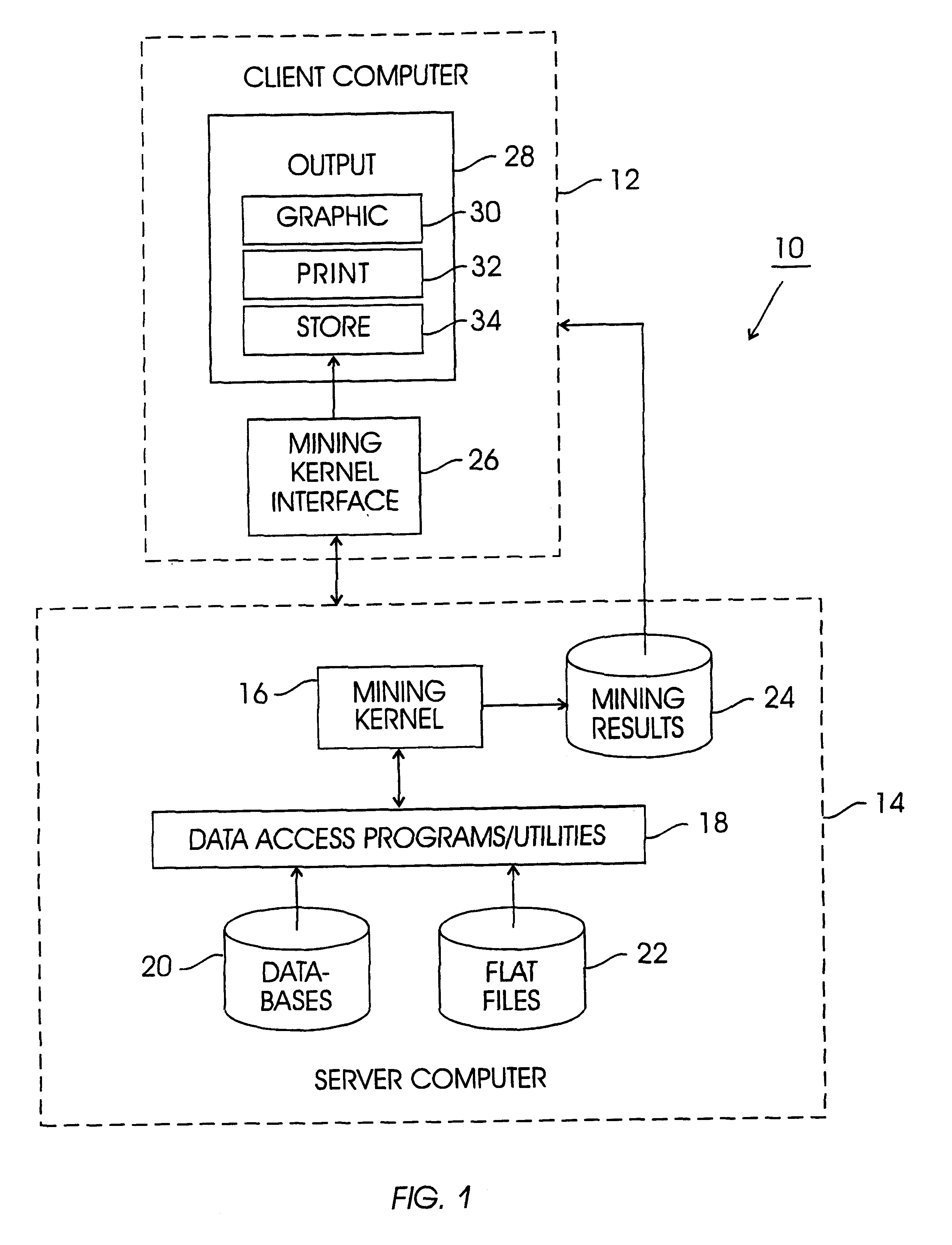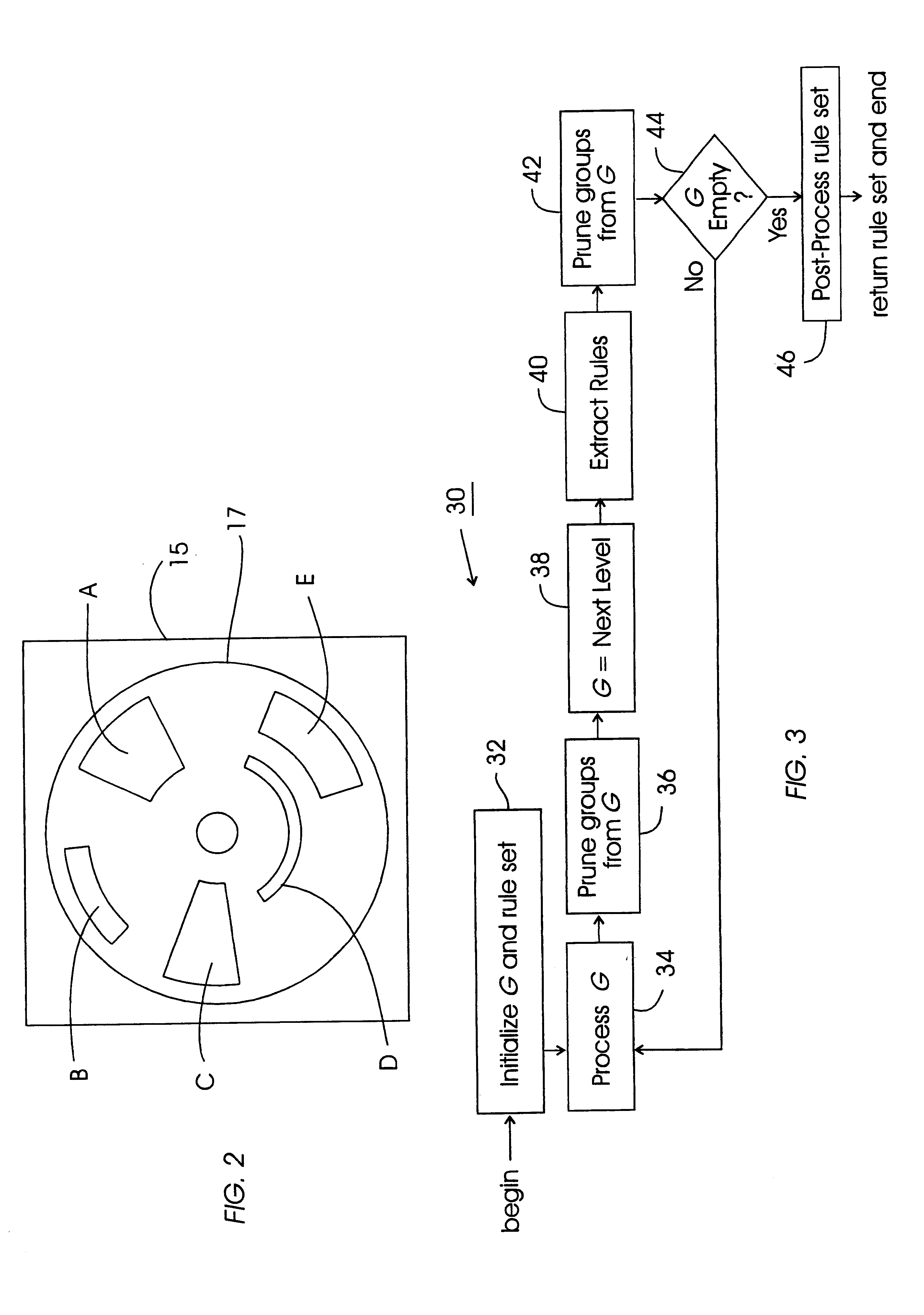System and method for constraint-based rule mining in large, dense data-sets
- Summary
- Abstract
- Description
- Claims
- Application Information
AI Technical Summary
Problems solved by technology
Method used
Image
Examples
Embodiment Construction
FIG. 1 illustrates a computer system 10 which may be used for mining databases, and in particular, may be used for discovering dense data association rules in accordance with the invention. In the particular computer architecture shown, the system 10 may include one or more digital processing apparatus, such as a client computer 12 and a server computer 14. In a preferred embodiment, the server computer may be a mainframe computer made by IBM Corp. of Armonk, N.Y., and use a multitasking operating system such as that sold the trademark MVS. The server computer 14 may also be a UNIX computer, an OS / 2 server, a Windows NT server or an IBM RS / 6000 250 workstation with 128 Mb of main memory using the AIX 3.2.5 operating system. The server computer 14 may include a database system, such as DB2 or ORACLE or it may have data in files on some other data storage medium, such as a disk (e.g., a 2 GB SCSI 3.5 inch drive or a tape). As will be apparent, other architectures may also be used. For...
PUM
 Login to View More
Login to View More Abstract
Description
Claims
Application Information
 Login to View More
Login to View More - R&D
- Intellectual Property
- Life Sciences
- Materials
- Tech Scout
- Unparalleled Data Quality
- Higher Quality Content
- 60% Fewer Hallucinations
Browse by: Latest US Patents, China's latest patents, Technical Efficacy Thesaurus, Application Domain, Technology Topic, Popular Technical Reports.
© 2025 PatSnap. All rights reserved.Legal|Privacy policy|Modern Slavery Act Transparency Statement|Sitemap|About US| Contact US: help@patsnap.com



